Table of contents
No headings in the article.
Teaching a technical concept to someone who has never heard of it before can be challenging. Yet, your passion for making an impact will accommodate their needs and address their concerns.
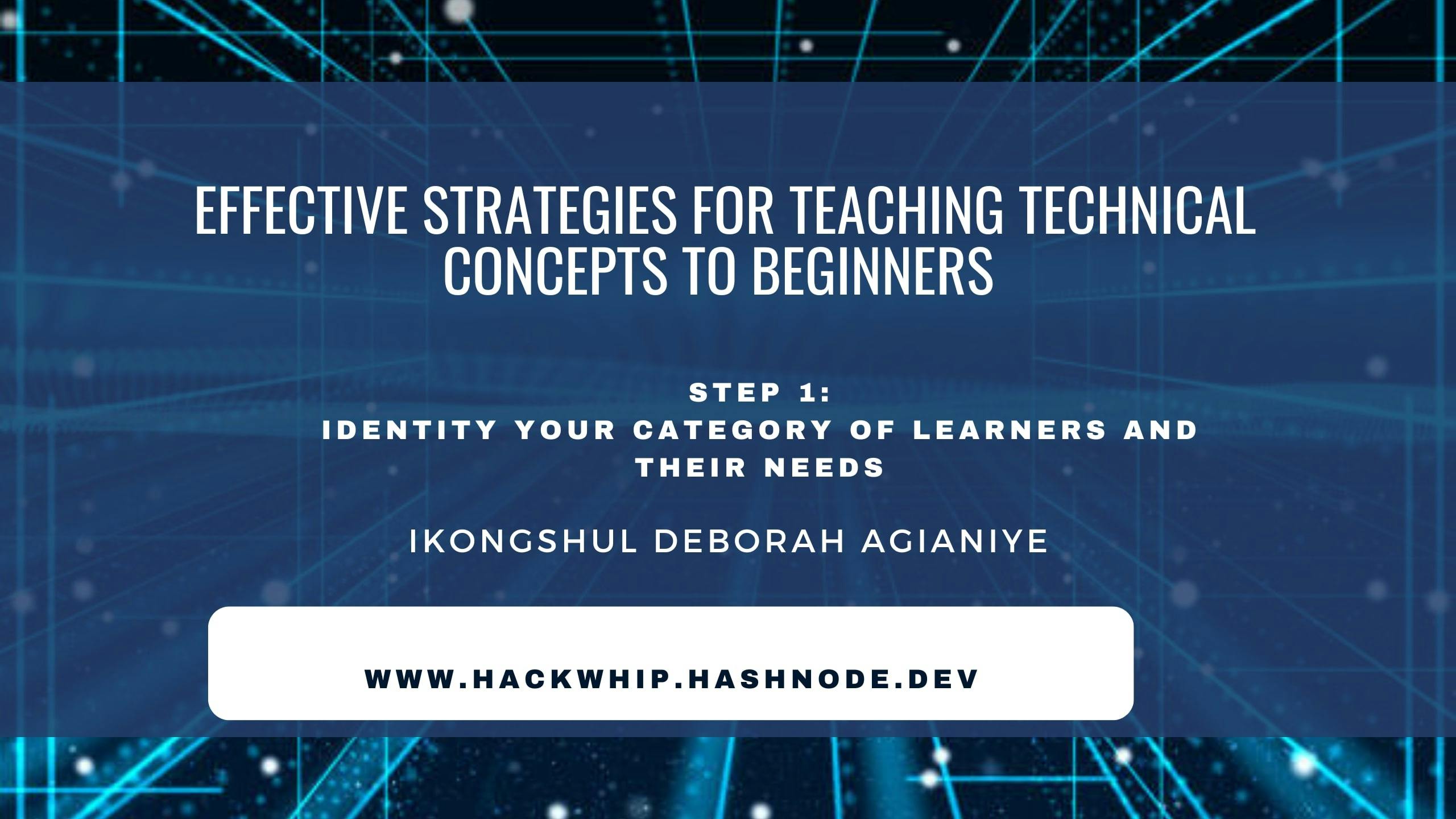
Now, there are different categories of learners based on their learning culture or preferences. This must be kept in mind by instructors. This is because understanding what category of learner you will be addressing can help you design teaching methods and strategies effective for catering to your learner's needs.
There are those learners who learn more when they have written materials about the concept at hand - they usually want to highlight or rewrite your explanation to what they have at hand to their own understanding.
There are also those who learn best through series of discussions and peer mentoring - which means, you will have to become their peer when there are no peers.
There are still those who learn better by hands-on experience
There are those learners who learn more effectively when a visual illustration of what they are being taught is presented.
It can therefore be advised to issue a questionnaire prior to a Technical Session. This will enable you to not just learn about the categories of learners you'll be instructing but also their needs - that is, the concerns they hope to address during the session. These concerns could be presented by an instructor in the form of Frequently Asked Questions (FAQs) about the concept, which may also be the questions the learners hope to be answered.
Say for instance, one is to conduct a technical session on Blockchain Technology. Although an intending learner has no knowledge of what the concept is, possible questions aside from what the concept entails could be:
What are the benefits of blockchain technology and why is it so crucial?
What are some real-world applications of blockchain technology?
What are the potential limitations and challenges of blockchain technology?
What are the key technical terms and concepts related to blockchain technology that I should know?
What are the security risks associated with blockchain technology? Is it safe?
What are some of the popular blockchain platforms and tools available for developing blockchain applications?
This questionnaire can be a Google Form, Microsoft Form or other technologies an instructor wants to use.

To teach a technical concept to a peer, say a female, who has never heard of it before, I’ll first ensure that I am knowledgeable enough to teach such a concept before proceeding. Being knowledgeable enables you to provide accurate and reliable information, which fosters effective learning. By establishing your expertise, you can instill confidence in your peer and create a supportive learning environment
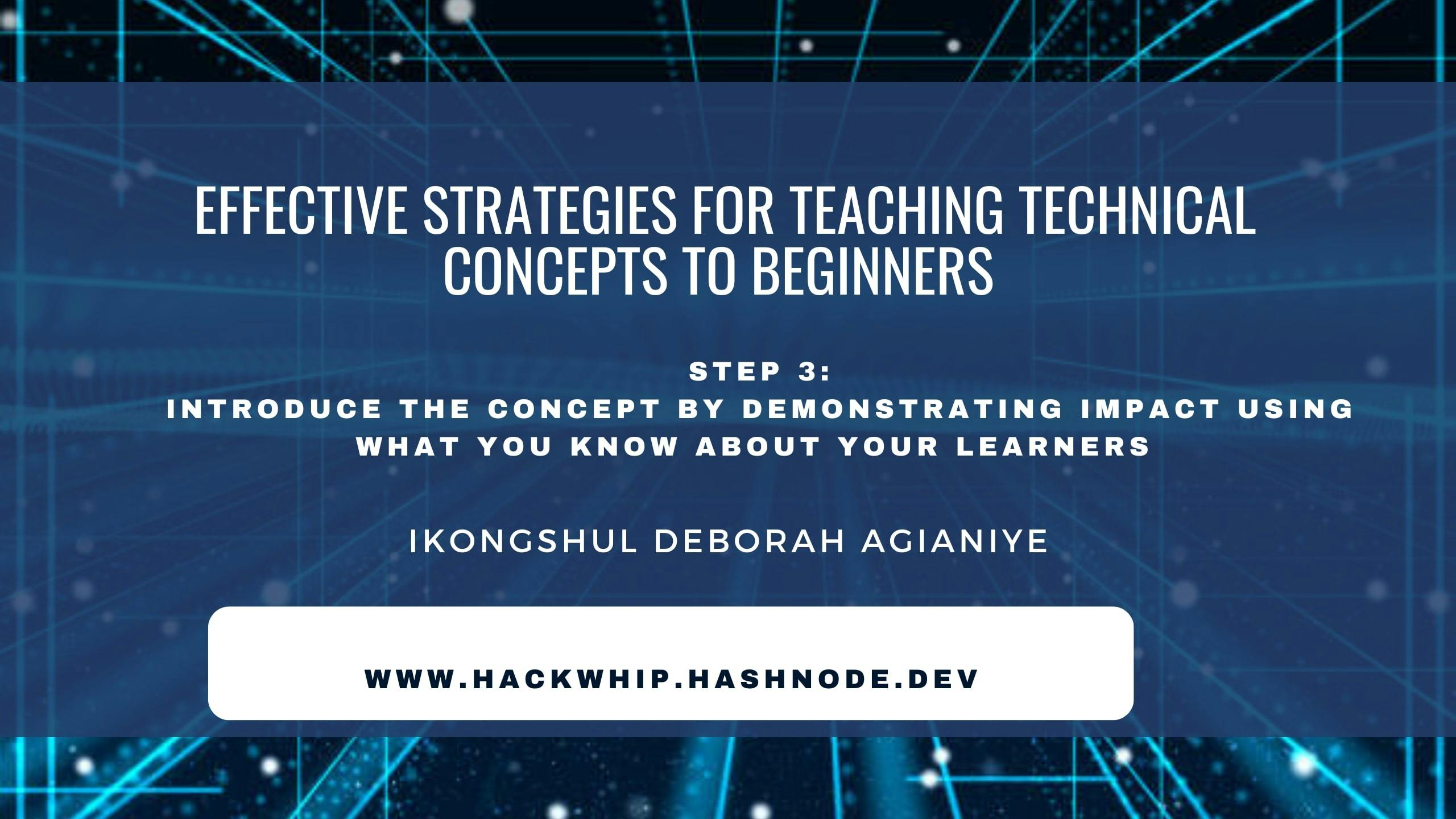
I’ll introduce the concept by demonstrating its impact using what I know about her. That is, how the concept helps her by giving her real examples to facilitate her understanding. Say for instance, she is the Operations Manager of an Ecommerce company, so she oversees the day-to-day operations of the ecommerce business, including:
Logistics
Inventory management and
Order fulfillment;
I'll let her know that Blockchain Technology has the potential to impact her company's logistics, warehousing and distribution systems and this is possible through:
Improved supply chain transparency.
Enhanced traceability.
Streamline logistics operations
Improved inventory management
Enhanced security
Improved supplier management
Improved payment processing.
The list is more 🙃
This will get her attention, help her develop interest and understand the concept.
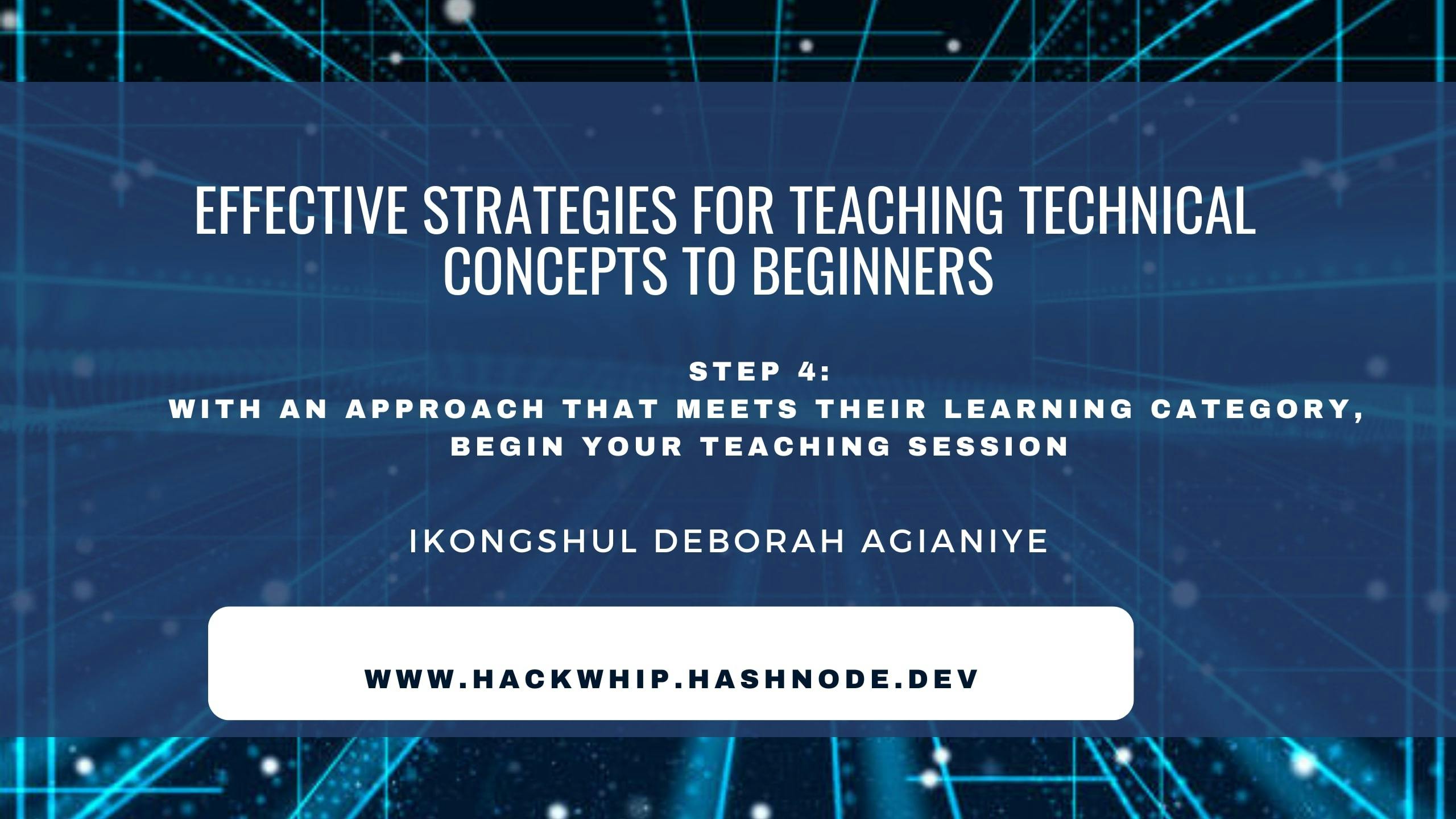
Then using a clear and compelling approach she should comprehend, like being conversational and using visual illustrations, I will start teaching from the very beginning, giving an overview of what the concept is.

In order to proceed, I will pause to understand her concerns, i.e., know what her true interest is in the concept I'm discussing. These concerns may be those she hoped to be addressed during the session or those that arose during the session. By understanding her concerns, I can explain things more effectively and provide information to her according to what she wants to know. I can also address her needs.
Then, I'll relate her needs to other sub-concepts about the Concept and watch my peer closely while I'm teaching and take note of her facial expressions and learning style. If she appears confused, I'll ask her. If it seems she’s losing interest, I’ll try to be humorous. I'll reassure her that unfamiliarity with the concept now does not preclude her from excelling in the field tomorrow. I’ll switch to a more conversational and engaging style, allowing her to relate what I’m saying to her own knowledge. By doing this, I’ll have encouraged and made her feel comfortable about the concept.
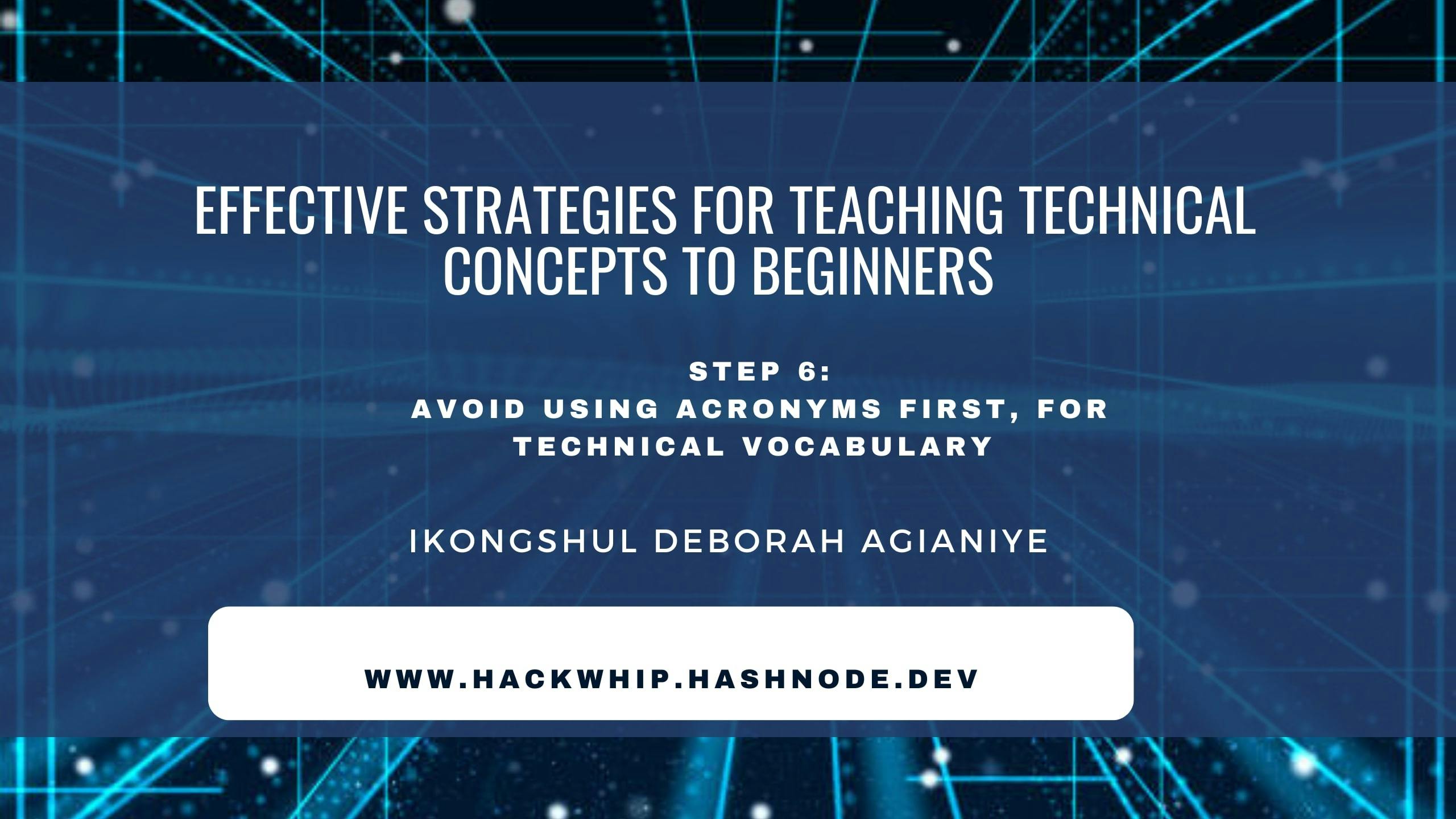
Continuing, I’ll avoid introducing acronyms first for technical vocabulary because forgetting certain terminology may disengage my peer. So first, I’ll try to translate the terminologies involved into a layman’s understanding or provide a reference guide for any acronym I’ll use.

Thereafter, I’ll create room for whatever questions may arise while asking her mine to make sure she understands.
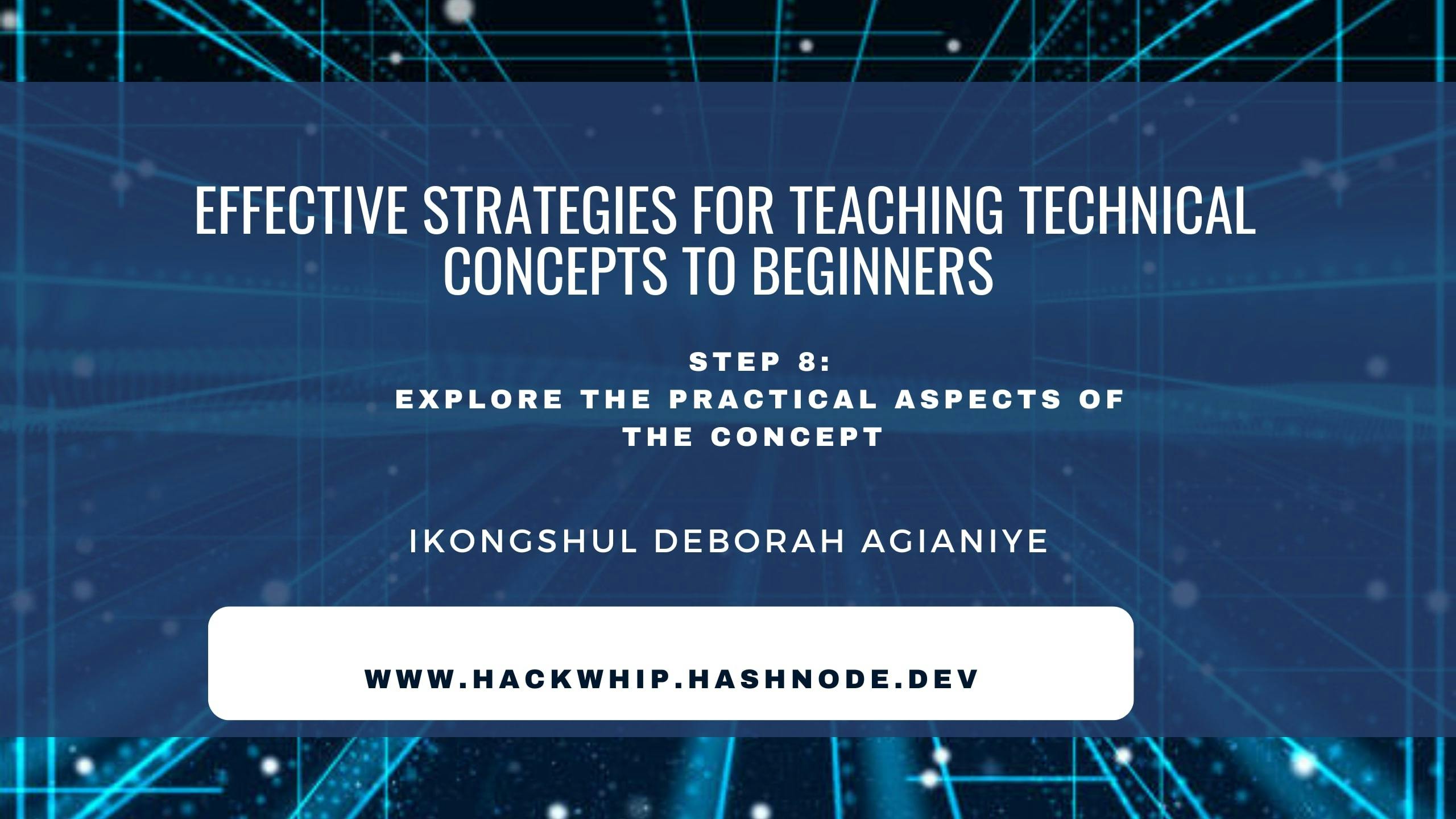
Finally, I will lead her to using a blockchain application, to give her a hands-on practical experience, so she can solidify the foundations of her knowledge. An example of such an application we could explore, is Follow My Vote - which is a voting system that uses blockchain technology to create an immutable and transparent record of votes cast through it. In this application, voters can verify that their votes were recorded correctly and that no one can tamper with them. This is because the application encrypts and stores these votes and they can only be decrypted by authorized parties with the right decryption keys. This would give her an insight into how blockchain provides security, transparency and integrity.
This would also help her retain her skills. She may not remember up to 65% of what I said, but she should be able to remember 70% of what she was led to do.
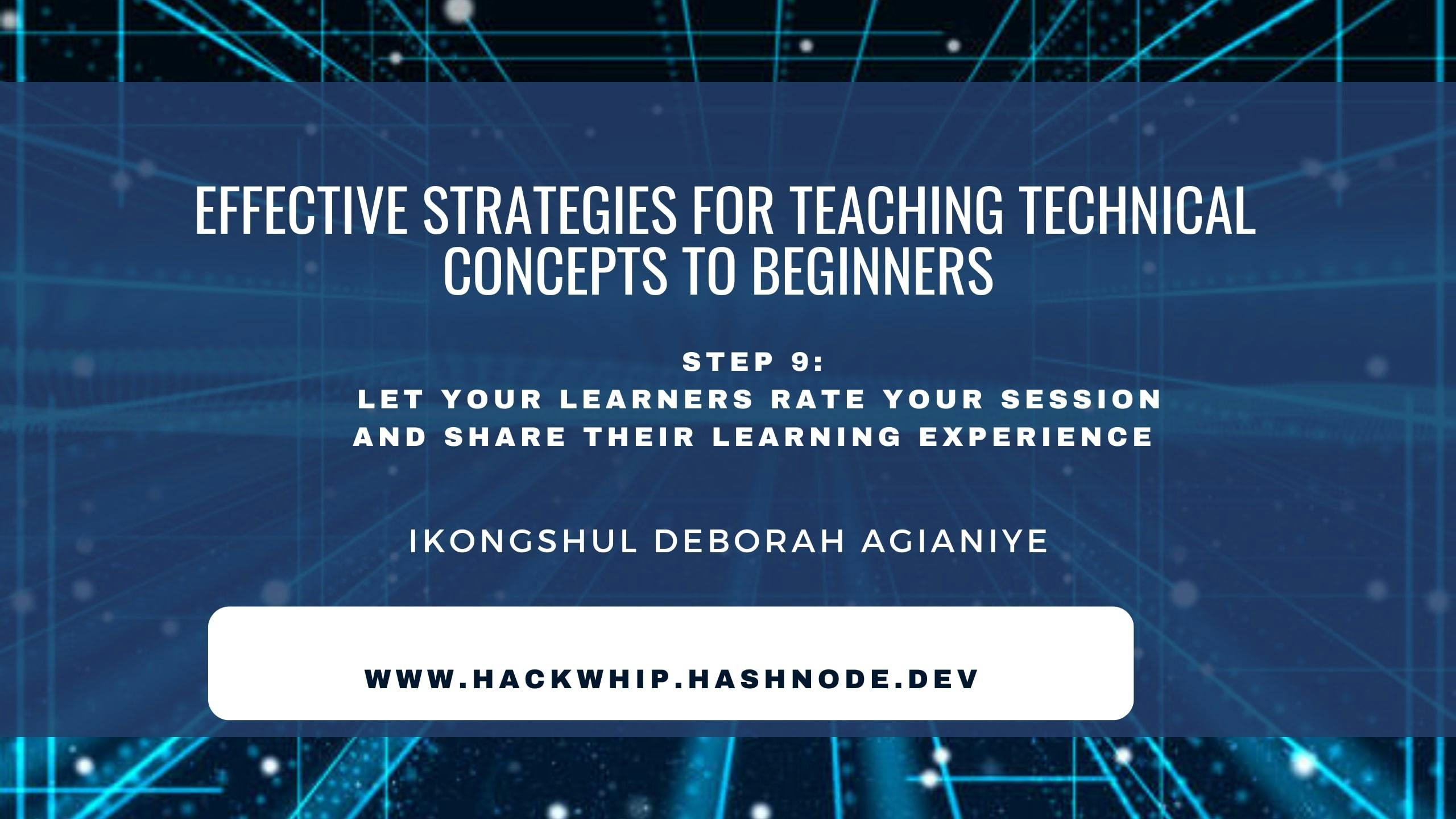
Finally, I would ask her about her overall experience during the session with me. This would determine if, when, and where there will be a next session.
With this, I can conclude that I have delivered a successful learning session.
Thank you so much for reading. Your thoughts and feedback are welcome.
